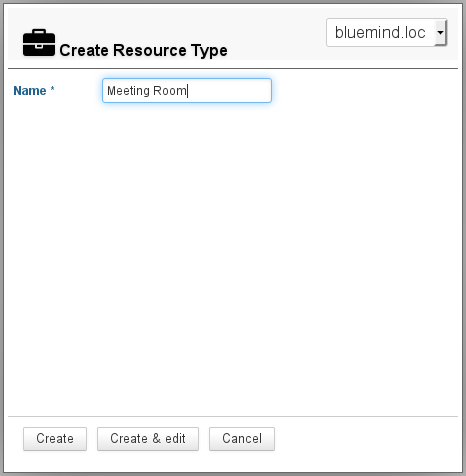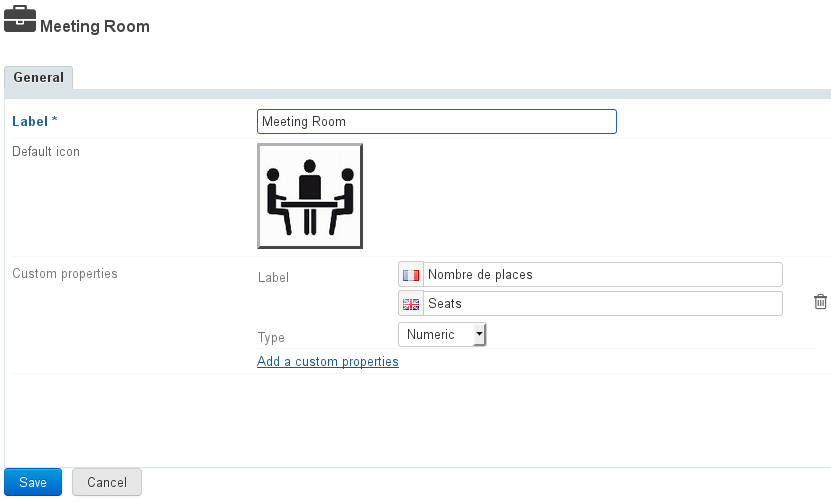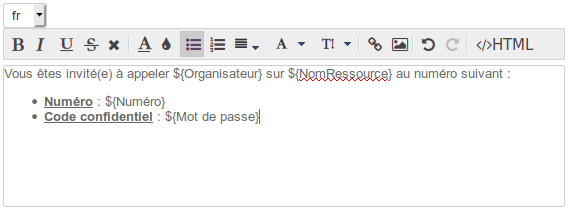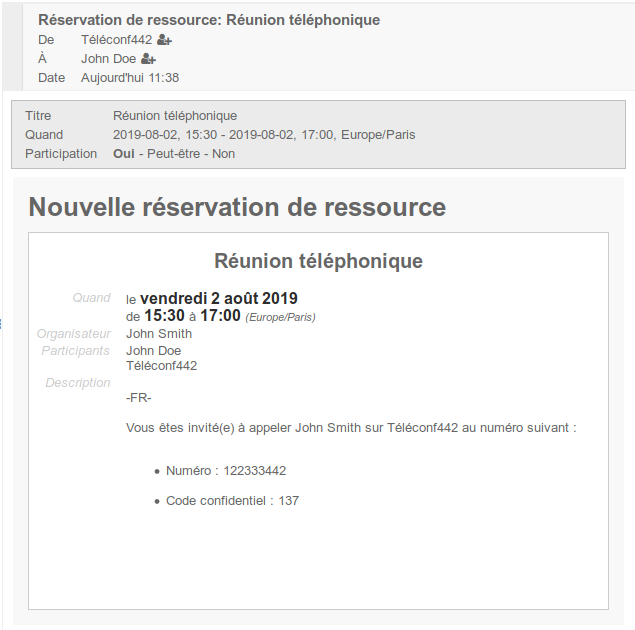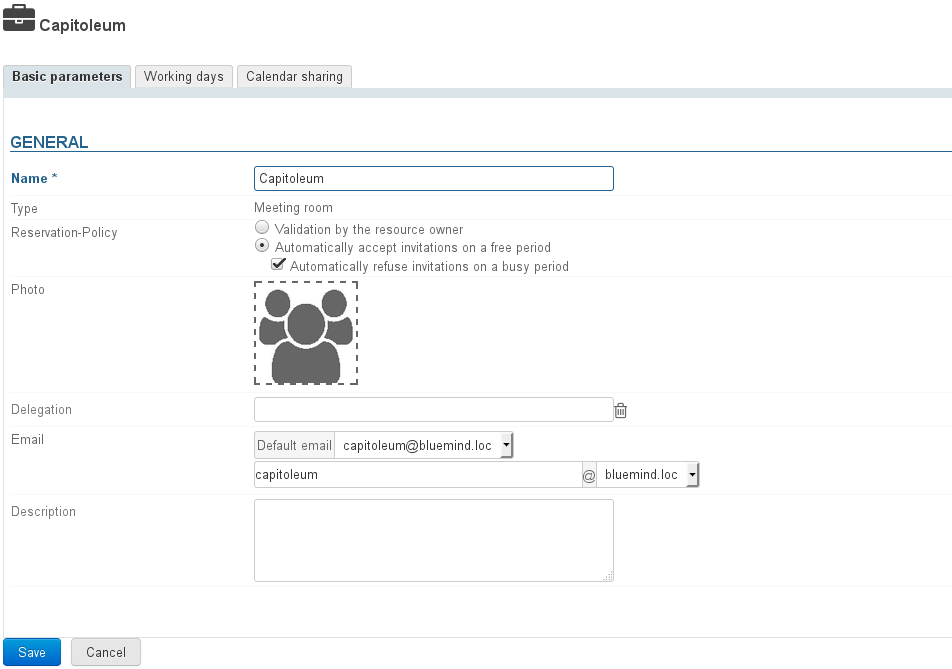Historique de la page
...
| Sv translation | |||||||||||||||||||||||||||||||||||
|---|---|---|---|---|---|---|---|---|---|---|---|---|---|---|---|---|---|---|---|---|---|---|---|---|---|---|---|---|---|---|---|---|---|---|---|
| |||||||||||||||||||||||||||||||||||
Managing resource typesIn the admin console, go to Directories > Resource types to view and manage the types of resources available. À partir de BlueMind 3.5.13 4.1, il est possible de définir des patrons de description d'événements. Lors de l'invitation d'une ressource de ce type à un événement, le patron sera automatiquement inséré dans la description de l'événement. Ces patrons peuvent contenir des variables et être définis dans plusieurs langues afin de s'adapter à la langue de l'organisateur de la réunion. Creating a new resource type typeTo add a new resource type, click the "New" button and fill in the information: Next click "Create" to quickly create a resource type or "Create & edit" to create a resource type and access further customization options (see "Editing a resource type"). Editing a resource typeTo edit a resource type, click it in the list of available types. The resource editing window enables you to change the label, add a default icon and edit or add custom properties. Créer un patron de contenuÀ partir de BlueMind 3.5.13 il est possible de définir un patron : ce texte sera automatiquement ajouté à la description d'une réunion lorsque la ressource y sera invitée. Pour créer un patron :
Patron multilingueAjout d'une languePour créer d'autres langues :
Suppression d'une languePour supprimer le patron d'une langue :
Utilisation de variablesLe patron peut contenir des variables, qui seront à renseigner dans la ressource de ce type puis remplacées automatiquement dans le patron par le système lors de la création de l'événement. Comme indiqué dans l'aide en ligne au dessus du formulaire, 2 variables existent pour tous les types et toutes les ressources :
D'autres variables peuvent être créées au moyen des Propriétés personnalisées . Pour cela, cliquer sur le lien "Ajouter une propriété personnalisée" : Remplir le libellé (en Français et en Anglais) et choisir le type de variable : 3 types de variables sont possibles :
Pour insérer une variable dans la patron on utilisera ensuite la syntaxe Soit par exemple le type de ressource ci-dessus en exemple : Visioconférence. Chaque ressource correspondra à un pont de conférence et aura donc 2 variables :
On remplira comme patron :
Dans la fiche d'administration de la ressource, ces champs seront à remplir dans la section "Autre" : Enfin, lorsque cette ressource sera invitée à une réunion, la description de celle-ci sera complétée avec le patron et les valeurs de variables :
you to change the label, add a default icon and edit or add custom properties. Managing resourcesCreating a resourceIn the Directory Browser, click "New" > "Resource" and fill in the information for the resource you want to create:
Next click "Create" to quickly create a resource or "Create & edit" to create a resource and access further customization options (see "Editing a resource").
To edit a resource, click its name in the list of available resources. GeneralPropertiesThe resource editing window enables you to change the parameters set on creation and add custom fields (capacity, description, etc.):
From BlueMind 3.5.5, administrators Administrators can choose to allow or prevent multiple bookings (overbooking) for a resource:
Available hoursThe new "Working days" tab allows you to set resource availability days and times, as well as the minimum duration they can be booked for (1hr, 2hrs, half-day, day) and time zone:
By default, public share privileges for resources are set to "can book this resource and see its bookings": all domain users can see the calendar and request access to this resource by adding it to an event. To modify change public share rights level and/or grant additional rights (to the resource administrator or specific users, for example), click the "Calendar sharing" tab: Possible rights are:
This tab also allows you to share the calendar externally and manage its availability (freebusy). For more information on sharing, go to Managing shares. Using a resourceTo connect a resource to an event, simply add it to the list of participants (as you would a user) when creating an event. Once the event is created, the resource's managers (those with calendar modification privileges) can accept or reject the invitation request through their calendar or the invitation message itself (provided a request was sent). To find out more about using resources, see the user's guide page on Les ressources. |

